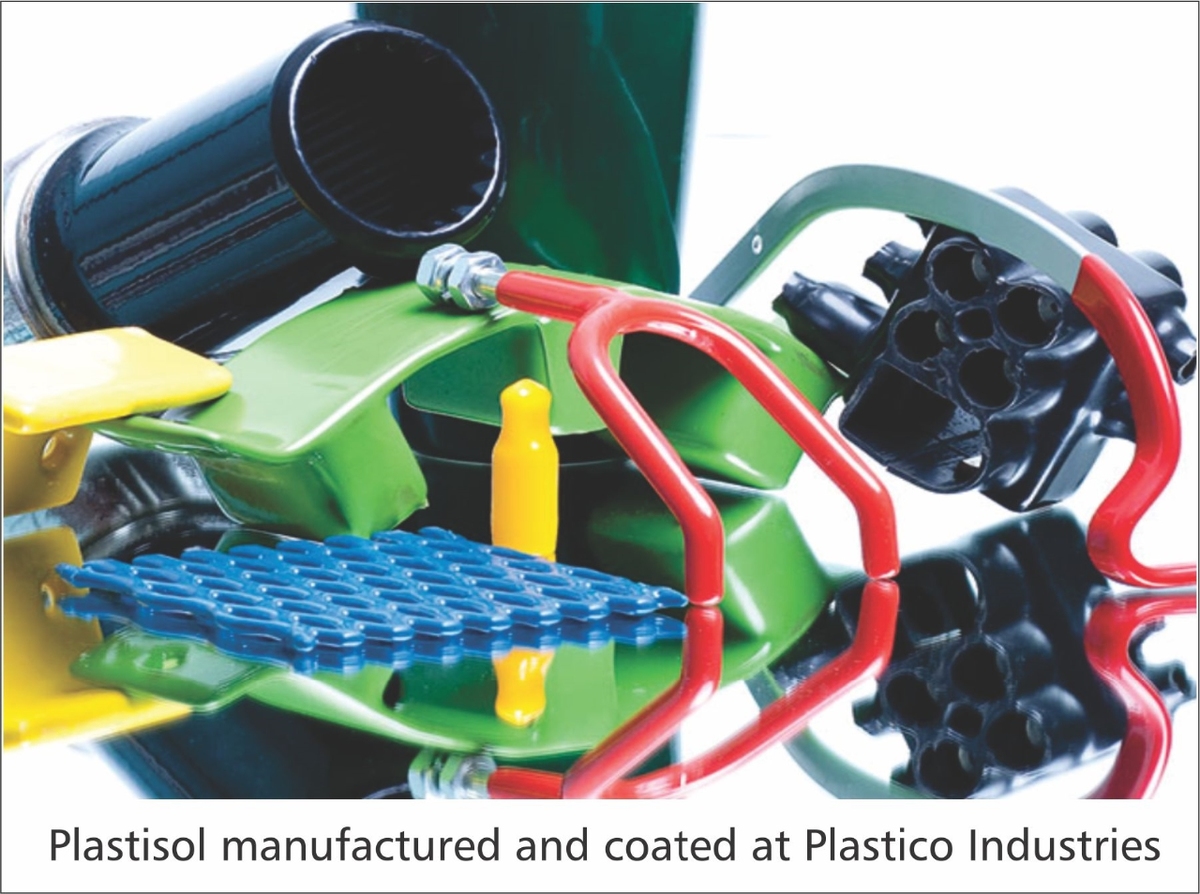
Plastico Industries has been making and applying plastisol for nearly 20 years. Because we are so ingrained with the manufacturing of it, and the application of it, we often forget that many people are not really sure what plastisol truly is! Here’s a quick, clean primer on the plastic coating known as Plastisol.
What Plastisol is Made Of
Plastisol is described as, “a suspension of PVC or other polymer particles in a liquid plasticizer.” Huh?
Let’s put that in layman's terms.
The first part of the equation is polyvinyl chloride, better known as PVC or vinyl. It’s a synthetic plastic polymer, meaning that it is a chemical, man-made plastic.
PVC plastic is mainly derived from salt and ethylene. Its production consumes less energy and creates fewer emissions than many other plastic products. Many PVC products are manufactured to meet medical and food-contact standards set by the Environmental Protection Agency (EPA) or the U.S. Food and Drug Administration.
PVC is incredibly versatile. It can be made thick or thin, rigid or pliable, and in practically any colour imaginable. The properties of PVC and other synthetic polymers can be modified by combining them with other ‘ingredients’ or additives like plasticizers.
Plasticizers are substances added to materials to decreases their viscosity or thickness. Essentially, the plasticizer dissolves in the polymer and fills the space between the polymer particles, pushing them farther apart. This makes the PVC softer and easier to bend.
The more plasticizer added, the more flexible the plastic becomes. By combining PVC particles with the right amount of plasticizer, the mixture can flow as a liquid. This liquid can then be applied to other materials through screen-printing/heat transfers, dip-coating or in molds!
You might remember how PVC's came under scrutiny a number of years back due to the presence of phthalates used in plasticizers. We recognized these concerns and switched to a phthalate-free plasticizer out of respect for our customers, end users and of course our employees. Today, Plastico Industries continues to produce a safer, phthalate-free Plastisol.
What Sets Plastisol Apart
Plastisol has many appealing characteristics that make it a top choice for coatings!
- Colour Matching – Since it’s made primarily from PVC, Plastisol can be matched to any colour you could ever need. Our most popular choices are black, red, blue, green and yellow, but Plastico can also manufacture custom colours in-house.
- Feel – Plastisol has a “warm to touch”, soft feel that is easy and comfortable to grip. It is used to coat tool grips, bicycle handlebar grips, furniture handles, and even kid-friendly playground equipment.
- Sound Deadening – With a soft, impact-resistant surface, Plastisol can reduce metal-on-metal sounds such as squeaks, buzz or rattle.
- Electrical Resistance – Plastisol has high dielectric strength and doesn’t conduct heat or electricity. It is often used as an insulator for electrical tools, sheathings and connectors on wiring and busbars.
- Chemical Resistance – Plastisol’s resistance to alkali and acid makes it ideal for racks and tooling that are exposed to chemical substances.
- Corrosion Resistance – Excellent for use on farm equipment, playground structures and other outdoor applications.
- Impact Resistance – Plastisol is tough! We can add hardening agents to produce Plastisol with a Shore durometer rating of up to 90.
- Wear Resistance – You’ll often find Plastisol coating components that are frequently manipulated such as latches and pull handles.
- Masking – Used as masking for other secondary coating applications.
How Plastisol Is Applied
Plastico Industries specializes in Plastisol dip-coating and molding. Another option is to dip a pre-made shape into the Plastisol, cure the Plastisol and then remove the Plastisol from the shape. Good examples of this are bicycle handles and caps.
- Molding – Molding can include pouring the Plastisol mixture into a mold, curing the Plastisol and then removing it from the mold. This application can be used to make furniture feet, spacers, washers, plugs, fishing lures; the options are limitless.
- Dip-Molding - Dip-molding occurs when a part is dipped into Plastisol to put a coating over the part. The part must be preheated. This heat, along with the dip time, will determine the thickness of the Plastisol. This pre-heated part is then dipped into Plastisol to coat it and then heat cured.
Reach out to us online or call us at 1-888-866-543-3334 to learn more about our phthalate-free Plastisol dip-coating services.

